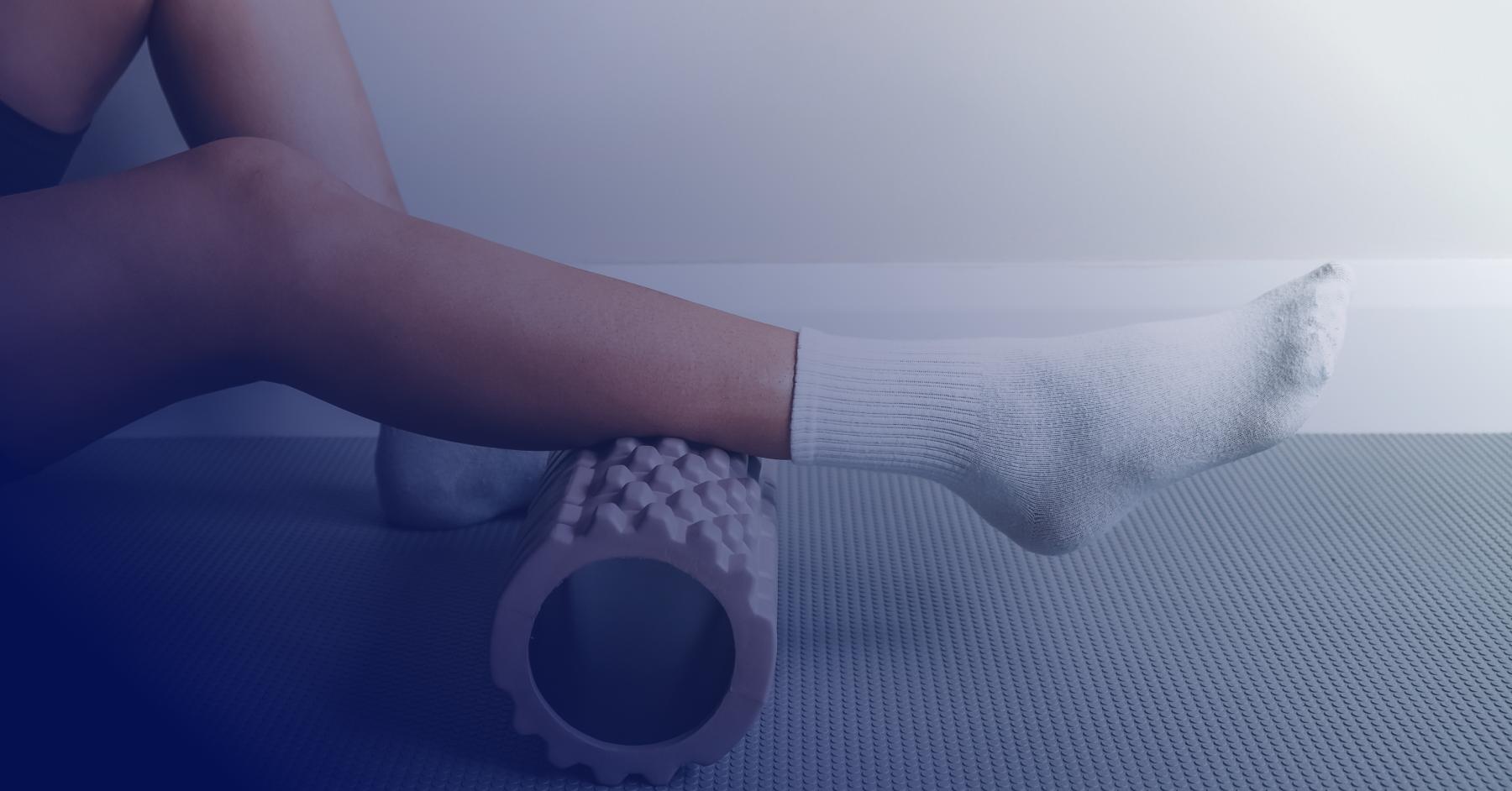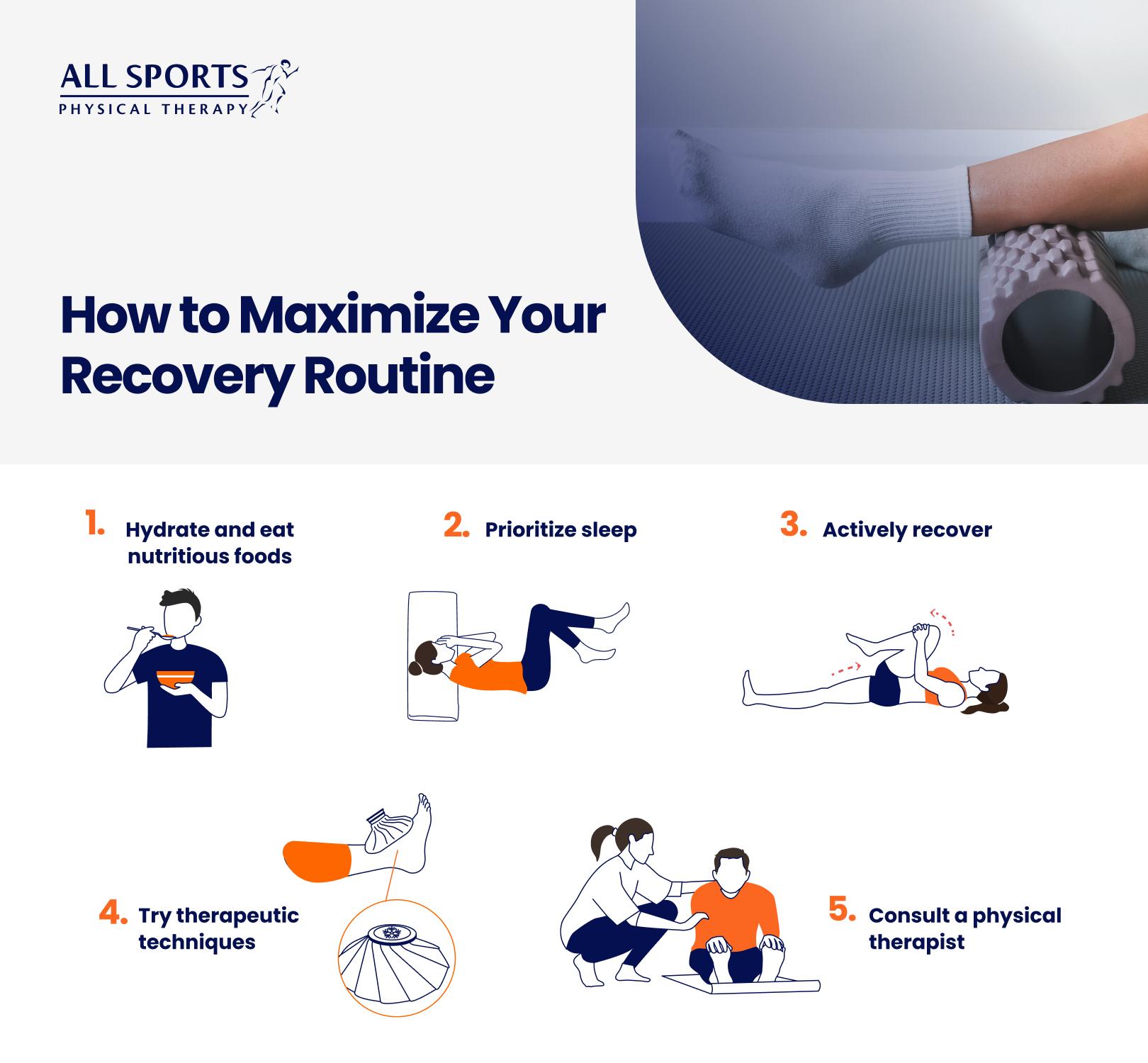How to Maximize Your Recovery Routine
Sports Medicine, Workout Injuries, Physical Therapy

From proper nutrition and rest to smart training breaks, discover how to build a post-exercise recovery routine that keeps your muscles, joints, and mind performing at their best.
Whether lifting weights, running, playing tennis, or joining a pickup basketball game, athletes and fitness enthusiasts often get caught up in the thrill of pushing their limits. But is constant intensity the best long-term strategy for building strength and stamina? Not always.
Many athletes dedicate so much of their time and effort on the workout itself they overlook the importance of recovery. Skipping proper rest can actually harm performance and increase the risk of injury over time. Healing from exercise involves more than a quick stretch or collapsing on the couch. A structured recovery routine helps your body repair, recharge, and prepare for your next session, so you can perform at your peak safely and consistently.
Understanding what happens during recovery
Exercise strengthens the heart, muscles, and joints, but progress actually happens after your workout. When you exercise, tiny tears form in your muscles. These tears repair and rebuild stronger than before, but only when you rest, especially during deep sleep.
Allowing time for muscle recovery not only maintains strength but also supports your joints, reducing your risk of injury.
How do you know when it’s time to take a break from exercising? Listen to your body. It will send signals that you’re over-training, like the following:
- Extreme fatigue or exhaustion
- Persistent muscle soreness or heaviness
- Decline in performance, even with regular training
- Mood changes such as irritability or lack of motivation
- Sleep disturbances or insomnia
- Frequent illness or lowered immunity
- Elevated blood pressure or resting heart rate
If you’re unsure how to structure your recovery or what your body needs, talk to a physical therapist or orthopedist. They can help design a customized plan to keep your muscles and joints healthy between workouts.
Core workout recovery tips from sports medicine experts

While resting is part of the healing process, proper post-workout recovery incorporates several components, with each one working together to restore your body:
- Nutrition. Aim for at least 20 grams of protein after each workout to fuel muscle repair. Support recovery with anti-inflammatory foods like whole grains, fruits, vegetables rich in vitamin C, and Omega-3 fats found in fish.
- Hydration. While hydration needs vary per person, it’s recommended to drink between 11.5-15.5 cups of water to replace lost fluids and prevent dehydration.
- Sleep. Adequate sleep is when muscle tissue repair and hormone regulation occur. Aim for seven to nine hours per night.
- Active recovery. Incorporate low-intensity movement such as walking, cycling, or gentle yoga. This promotes circulation and reduces stiffness.
- Electrolytes. Replenish key minerals like potassium, magnesium, and calcium through sports drinks or foods like bananas and oranges to prevent cramping.
- Supplements. Boost your nutritional support with supplements that support joint health and protein powder for extra healing power.
- Therapy. Massage, foam rolling, and ice therapy can relieve soreness and reduce inflammation.
- Professional support. If pain or fatigue persists, consult a licensed physical therapist for a thorough assessment and targeted treatment.
How to improve workout recovery with smart planning
A recovery period is not a one-size-fits-all program. When to rest depends on your workout intensity and goals. Yet there are several general workout recovery tips you can follow to refresh your body and mind.
Schedule rest days. Plan at least one rest day for every 7–10 days of intense exercise. A weekly schedule might look like:
- 3 days of strength training
- 2 days of cardio
- 2 days of active rest with light exercise
Listen to your body. Your body will tell you when it’s time to step away from your workout. Good ways to track your physical and mental state while exercising or after include:
- Keeping a journal to record your workouts, progress, and discomfort to highlight possible overtraining
- Wearing fitness trackers and wearables to assess health metrics such as heart rate, oxygen levels, body temperature, and sleep patterns
Common recovery mistakes to avoid
A structured recovery program maintains your muscle strength, boosts your immune system, and keeps your fitness level on an upward trajectory. For the best results, avoid these mistakes that can throw your recovery off-track:
- Overtraining or skipping rest days
- Ignoring early warning signs of strain
- Neglecting nutrition, sleep, or active rest
- Relying on supplements instead of whole foods
- Slowing recovery through alcohol or tobacco use
When to seek professional help
The intensity of your workout really determines how much recovery time you need. After a light session, about 24 hours of rest is usually enough to bounce back. But if you’ve pushed yourself through a tough, high-intensity workout, your body might need two to three days to fully recharge.
If you’re still feeling sore, stiff, or unusually tired after that, it could be a sign of something more serious—like an injury, muscle imbalance, or mobility issue. A consultation with a sports medicine doctor or physical therapist can determine why your rest periods are not giving you the energy boost for your next workout session.
We help with post-workout recovery
At All Sports Physical Therapy, we know recovery is as essential as training. Our experienced team of physical therapists can design a personalized program combining nutrition, rest, and targeted therapies to help you regain strength and mobility. We identify muscle imbalances and movement issues that may be holding you back, and help you return to peak performance safely.
Contact us today for a personalized recovery plan that keeps you moving at your best.
FAQs
What is the best for recovery after a workout?
Nutrition. Consume about 20 grams of protein immediately after your workout and rehydrate with water. Over time, pair this with active rest and quality sleep for optimal recovery.
Should I exercise if I'm still sore?
Slight soreness during or after a workout is normal. But extreme pain could indicate an injury or muscle damage. If you experience significant pain, stop exercising and consult with a doctor.
How do you know if you've overtrained?
Symptoms include extreme fatigue, poor performance, persistent aches, and mood changes. Rest and reassess your training load if these signs appear.
How can I speed up my muscle recovery?
Try to get a good night’s sleep, as muscle repair happens primarily during deep rest.
Which food is the best for muscle recovery?
Prioritize protein-rich foods like beans, eggs, lean meats, and dairy. Omega-3 fatty acids from fish such as salmon or tuna also support recovery and reduce inflammation.



